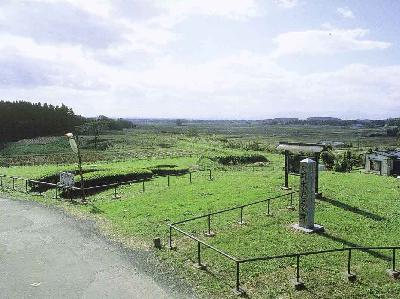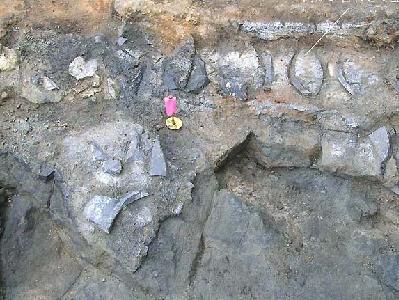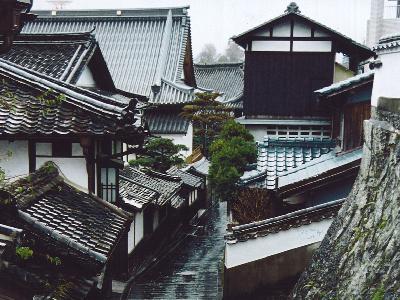|
The Kido tile kiln ruins site in Tajiri Numabe in Osaki City, Miyagi Prefecture, is a designated national Historic Site. It was revealed from the research conducted in 1958 and 1974 that these are the ruins of the cave kilns to produce roof tiles for Tagajo Fort at the time of its first construction in the early 8th century.
The excavated roof tiles include the half-round eave-end pendant tile with a lotus pattern with double layered petals, the concave rectangular pendant tiles with a pattern of parallel lines, half-round eave tiles, rectangular eave tiles, half-round tiles, broad concave tiles and oni-gawara (ridge-end tiles).
Also a broad concave tile inscribed with the name of the head of a sub-village composed of 200 families in the Osabe village (ri) in the Nakamura sub-county (go) in a certain county was found from the surface of the ground. This is an academically interesting historical datum to show that the central government’s system of Go-ri (sub-county and village) and its military system had already been introduced in this area, which is as far as 40 km away from Tagajo Fort, the administrative center of the time.
The excavated roof tiles include the half-round eave-end pendant tile with a lotus pattern with double layered petals, the concave rectangular pendant tiles with a pattern of parallel lines, half-round eave tiles, rectangular eave tiles, half-round tiles, broad concave tiles and oni-gawara (ridge-end tiles).
Also a broad concave tile inscribed with the name of the head of a sub-village composed of 200 families in the Osabe village (ri) in the Nakamura sub-county (go) in a certain county was found from the surface of the ground. This is an academically interesting historical datum to show that the central government’s system of Go-ri (sub-county and village) and its military system had already been introduced in this area, which is as far as 40 km away from Tagajo Fort, the administrative center of the time.
| [+ADDRESS] | 
|















